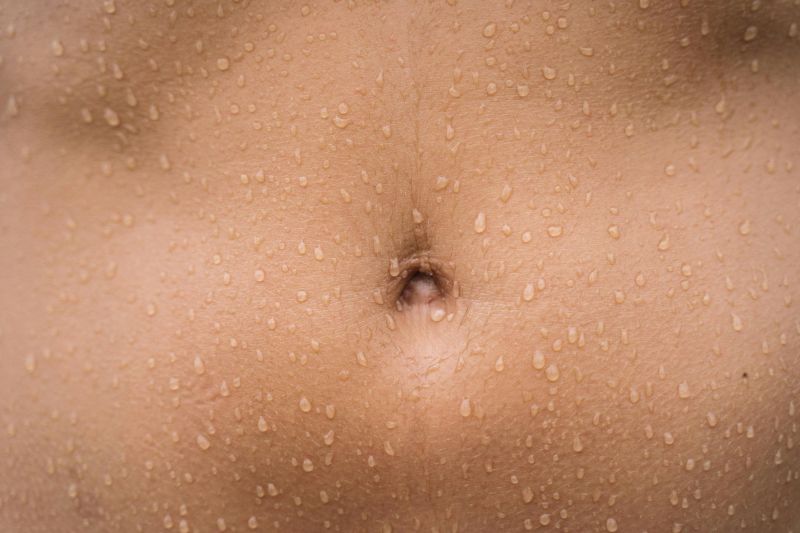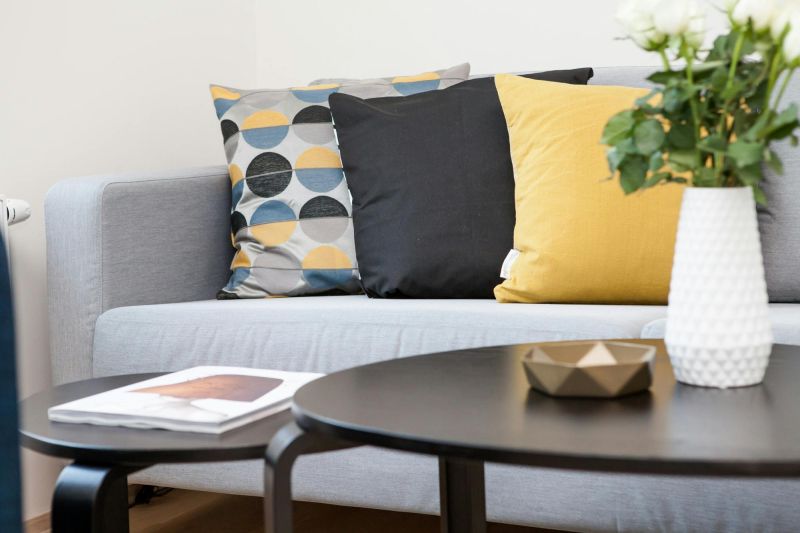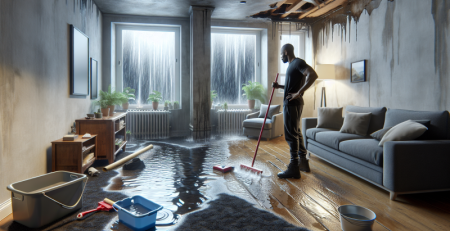Understanding the Impact of Humidity on Your Home
Humidity plays a crucial role in maintaining a healthy and comfortable home environment. Understanding the impact of humidity on your home is essential for preventing issues such as mold growth, structural damage, and poor indoor air quality. High humidity levels can lead to condensation, which not only damages walls and ceilings but also creates an ideal breeding ground for mold and mildew. Conversely, low humidity can cause discomfort and damage to wooden furniture and flooring. At Kraus Restoration, NJ’s leaders in water, mold, and fire damage restoration, we recognize the importance of managing humidity levels effectively. Our IICRC certified experts are available 24/7 to provide rapid response services, ensuring your home remains safe and comfortable. Serving Central and Northern NJ, we are dedicated to helping you understand and mitigate the effects of humidity. For immediate assistance, call us at (973) 886-2021.
What is Humidity and How is it Measured?

Humidity refers to the amount of water vapor present in the air, and it plays a crucial role in maintaining a comfortable and healthy indoor environment. High humidity levels can lead to various issues in your home, such as mold growth, structural damage, and discomfort. Conversely, low humidity can cause dry skin, respiratory problems, and damage to wooden furniture.
Humidity is typically measured using a device called a hygrometer, which can provide readings in relative humidity (RH) percentages. Relative humidity indicates how much moisture is in the air compared to the maximum amount the air can hold at a given temperature. For instance, a relative humidity of 50% means the air is holding half of its maximum moisture capacity.
According to the Environmental Protection Agency (EPA), maintaining indoor humidity levels between 30% and 50% is ideal for comfort and health.
To monitor and manage humidity effectively, consider the following methods:
- Use a hygrometer to regularly check indoor humidity levels.
- Install dehumidifiers in damp areas like basements.
- Ensure proper ventilation in bathrooms and kitchens.
As noted by the EPA, "Controlling humidity is essential for preventing mold growth and maintaining a healthy home environment." For more information on managing humidity and its effects on your home, explore our water cleanup services or mold cleanup services.
The Effects of High Humidity on Indoor Air Quality

High humidity levels can significantly impact indoor air quality, leading to a range of health and comfort issues. When humidity rises above optimal levels, typically between 30% and 50%, it creates an environment conducive to mold growth, dust mites, and other allergens. These conditions can trigger respiratory problems, allergies, and asthma symptoms in sensitive individuals. Additionally, high humidity can cause discomfort, making indoor spaces feel warmer than they actually are, which may lead to increased reliance on air conditioning systems.
Excess moisture in the air can also contribute to structural damage within your home. It can warp wood, damage paint, and promote the growth of mold, which can compromise the integrity of your property. To combat these issues, it is essential to monitor humidity levels and implement effective water cleanup strategies when necessary. Utilizing dehumidifiers and ensuring proper ventilation can help maintain a healthy indoor environment.
If you suspect that high humidity is affecting your home, consider reaching out for professional assistance. Services such as mold cleanup can address existing issues, while preventative measures can safeguard your indoor air quality. For more information on how to improve your home’s environment, visit our about page.
How Low Humidity Can Affect Your Home and Health
Low humidity can significantly impact both your home and your health. When indoor humidity levels drop below 30%, it can lead to a range of issues that affect comfort and well-being. Dry air can cause skin irritation, respiratory problems, and exacerbate allergies. Individuals may experience dry throat, itchy eyes, and increased susceptibility to colds and flu, as low humidity can dry out mucous membranes, reducing their ability to trap pathogens.
In your home, low humidity can lead to structural problems. Wooden furniture and flooring may crack or warp, while paint and wallpaper can peel. Additionally, static electricity becomes more prevalent in dry conditions, which can be annoying and damaging to electronic devices. To combat these issues, consider using a humidifier to maintain optimal humidity levels between 30% and 50%.
Regular maintenance of your home’s environment is crucial. If you notice signs of low humidity, such as dry skin or increased static, it may be time to assess your indoor air quality. For more information on maintaining a healthy home environment, visit our about page or explore our services for solutions tailored to your needs. Don’t hesitate to contact us for expert advice on improving your home’s humidity levels.
Common Signs of Humidity Issues in Your Home

Humidity plays a crucial role in maintaining a healthy and comfortable living environment. However, excessive moisture can lead to various issues within your home, often manifesting in several noticeable signs. One of the most common indicators of humidity problems is the presence of mold and mildew, which thrive in damp conditions. You may notice a musty odor or see dark spots on walls, ceilings, or hidden corners, signaling a potential mold infestation.
Another sign is the appearance of condensation on windows and walls, which can lead to water damage over time. Peeling paint or wallpaper is also a red flag, as high humidity can cause these materials to lose adhesion. Additionally, if you find your home feeling excessively clammy or if you experience increased allergy symptoms, it may be time to assess your indoor humidity levels.
To effectively address these issues, it’s essential to understand the sources of moisture and implement appropriate solutions. Regular maintenance and monitoring can help prevent long-term damage. For more information on how to tackle humidity-related problems, consider exploring our water cleanup and mold cleanup services. If you have further questions, feel free to contact us for expert assistance.
Tips for Maintaining Optimal Humidity Levels
Maintaining optimal humidity levels in your home is crucial for both comfort and health. High humidity can lead to mold growth, dust mites, and other allergens, while low humidity can cause dry skin, respiratory issues, and damage to wooden furniture. To achieve the ideal indoor humidity level, which is typically between 30% and 50%, consider using a hygrometer to monitor moisture levels accurately.
One effective way to control humidity is by utilizing dehumidifiers in damp areas such as basements and bathrooms. These devices help reduce excess moisture, preventing mold and mildew from taking hold. Conversely, during dry winter months, using humidifiers can add necessary moisture to the air, improving comfort and protecting your home’s interior.
Proper ventilation is also essential. Ensure that your home has adequate airflow, especially in areas prone to moisture, like kitchens and bathrooms. Opening windows when weather permits and using exhaust fans can significantly help in regulating humidity levels.
Regular maintenance of your home’s plumbing and roofing is vital to prevent leaks and water damage. For professional assistance in managing humidity-related issues, consider reaching out to experts in water cleanup and mold cleanup. By implementing these strategies, you can create a healthier living environment and protect your home from the adverse effects of humidity.
The Role of Humidity in Home Maintenance and Preservation
Humidity plays a crucial role in the maintenance and preservation of your home, influencing both structural integrity and indoor air quality. High humidity levels can lead to a range of issues, including mold growth, wood rot, and damage to insulation and drywall. Mold thrives in damp environments, making it essential to monitor and control humidity levels to prevent costly mold remediation efforts.
Conversely, low humidity can cause problems such as dry air, which may lead to cracks in wooden furniture and flooring, as well as discomfort for occupants. Maintaining an optimal humidity level, typically between 30% and 50%, is vital for ensuring a healthy living environment. This can be achieved through proper ventilation, the use of dehumidifiers, and regular maintenance of HVAC systems.
Regularly inspecting areas prone to moisture, such as basements and bathrooms, can help identify potential issues early. Homeowners should also be aware of the signs of humidity-related damage, such as peeling paint and musty odors. By understanding the impact of humidity on your home, you can take proactive steps to preserve its condition and enhance its longevity. For more information on how to protect your home, visit our services page or contact us for expert advice.
Understanding Humidity Control Systems and Solutions
Humidity plays a crucial role in maintaining a healthy and comfortable home environment. High humidity levels can lead to a range of issues, including mold growth, structural damage, and discomfort for occupants. Conversely, low humidity can cause dry skin, respiratory problems, and damage to wooden furniture and flooring. Understanding how to effectively manage humidity is essential for homeowners.
Humidity control systems are designed to regulate moisture levels in your home, ensuring a balanced environment. These systems can include dehumidifiers, humidifiers, and advanced HVAC solutions that monitor and adjust humidity levels automatically. By investing in the right humidity control solutions, you can protect your home from the adverse effects of moisture imbalance.
Additionally, regular maintenance and monitoring of humidity levels can prevent potential problems before they escalate. Homeowners should consider conducting a thorough assessment of their property to identify areas prone to excess moisture. Implementing effective mold cleanup strategies is also vital, as mold thrives in humid conditions and can pose serious health risks.
In summary, understanding and managing humidity is key to preserving your home’s integrity and ensuring a healthy living space. For more information on how to tackle humidity issues, feel free to contact us.
In conclusion, understanding the impact of humidity on your home is essential for maintaining a comfortable and healthy living environment. High humidity levels can lead to mold growth, structural damage, and discomfort, while low humidity can cause dry skin, respiratory issues, and damage to wooden furniture. By monitoring humidity levels and taking proactive measures—such as using dehumidifiers, ensuring proper ventilation, and sealing leaks—you can create a balanced atmosphere that promotes well-being and protects your home. Ultimately, being aware of how humidity affects your space empowers you to make informed decisions that enhance your quality of life and preserve the integrity of your home for years to come.









